In this article you’ll learn how to construct the A minor triad as well as how to play it on piano and guitar.
We’ve also included sections on inversions for those that want a deeper understanding. Lastly, listen to some examples of popular songs that featured this triad.
Root, 3rd and 5th
The G flat minor triad is formed of the 1st, flat 3rd and flat 5th of the A major scale.
- A – root note
- C – minor 3rd above the root
- E – perfect 5th above the root
Here is the triad written on the stave in the treble and bass clef.


Before you read on make sure that you have a basic understanding of intervals. Intervals are vital for understanding how triads are built. Check out our guide to major, minor and perfect intervals for more on this.
A Minor Triad on Piano
Below you can see how to play this triad on the keyboard or piano. This pattern of notes could also be played starting on any G flat note.
However, the order of the notes must be the same:
- A – lowest note
- C – middle note
- E – highest note
This is called ‘root position’.
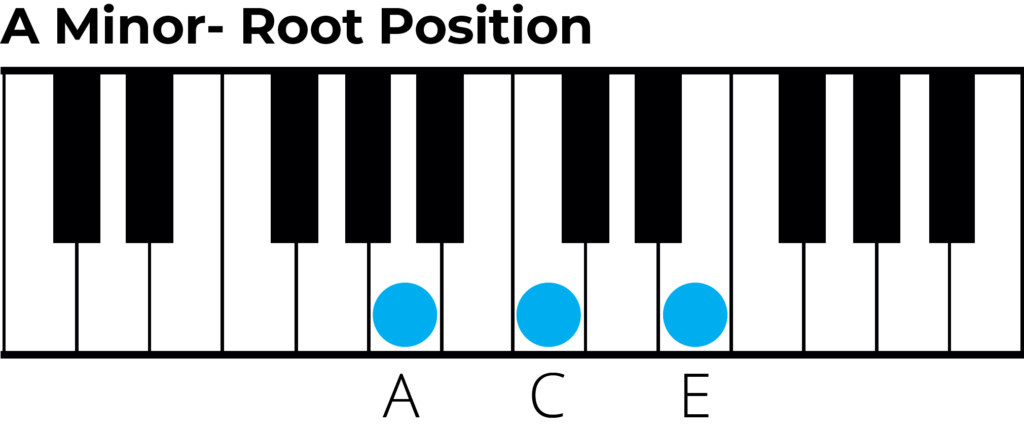
A Min Triad on Guitar
There are two simple positions that you can use to play an A min chord on guitar. Both positions can also be slide up or down the neck to play different minor triads.
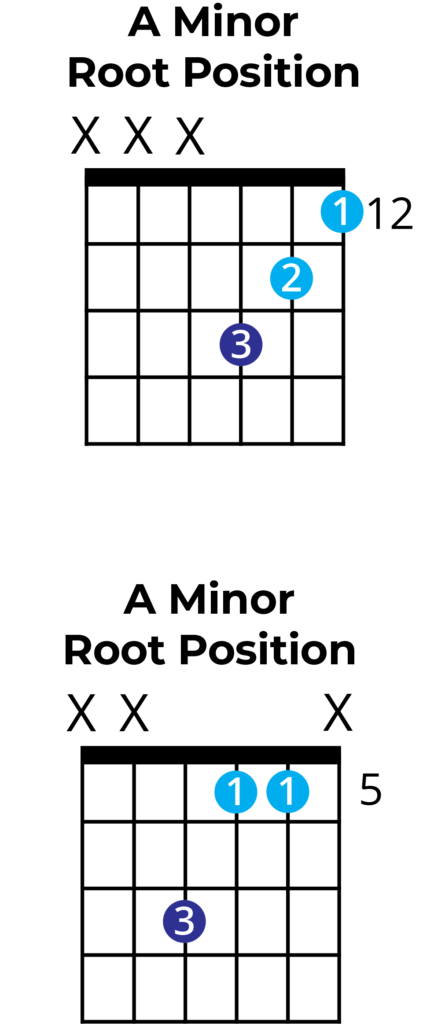
1st Inversion
A 1st inversion is where we take a triad but we start on the second note, which in this case is C natural. We still keep the E above, but then the A (or root) become the highest note.
This way of rearranging a triad gives us a different sound as the relative pitches of the three notes has changed.
- C – lowest note
- E – middle note
- A – highest note

1st inversion on Piano
On the piano we can play the 1st inversion of an A Min triad by starting on a C natural. They play the E above and the A above this.
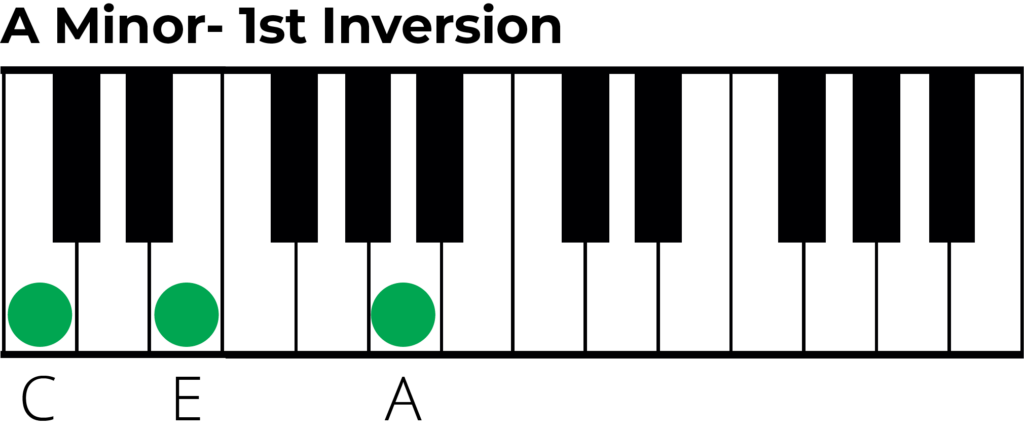
1st Inversion on Guitar
Below are the most common shapes for playing an A min triad in the 1st inversion. Remember that we can only use certain shapes are the pitches of the three notes are important.

2nd Inversion
A 2nd inversion is where we take a triad but we start on the third note, which in this case is E natural. We still keep the A above this as we did from the 1st inversion. Then the C becomes the highest note in the chord.
- E – perfect 5th (lowest note)
- A – root note (middle note)
- C – minor 3rd (highest note)
We could construct a 2nd inversion starting on any E note in any octave. The only thing that must stay the same is that the we use the A above and the C above that.

2nd inversion on Piano
On the piano we can play the 2nd inversion of an A Min triad by starting on a E natural. They play the A above and the C above this.
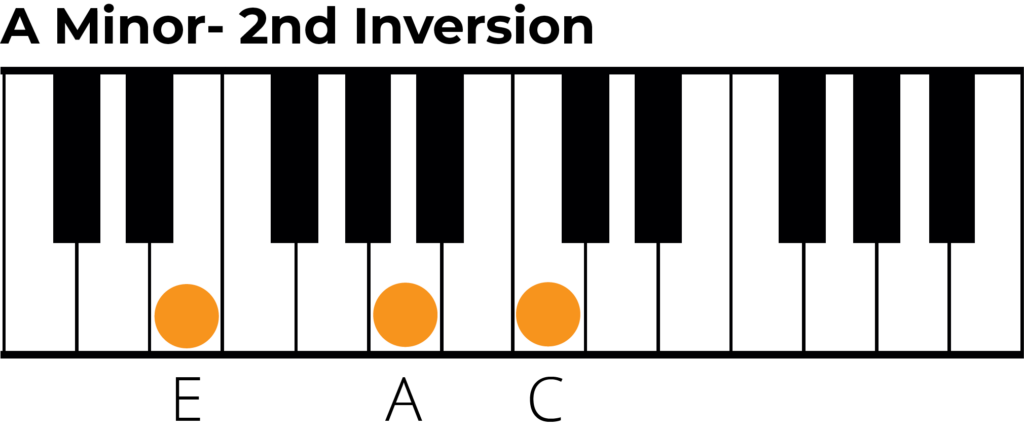
2nd Inversion on Guitar
Below are the most common shapes for playing an A min triad in the 2nd inversion. Remember that we can only use certain shapes are the pitches of the three notes are important.
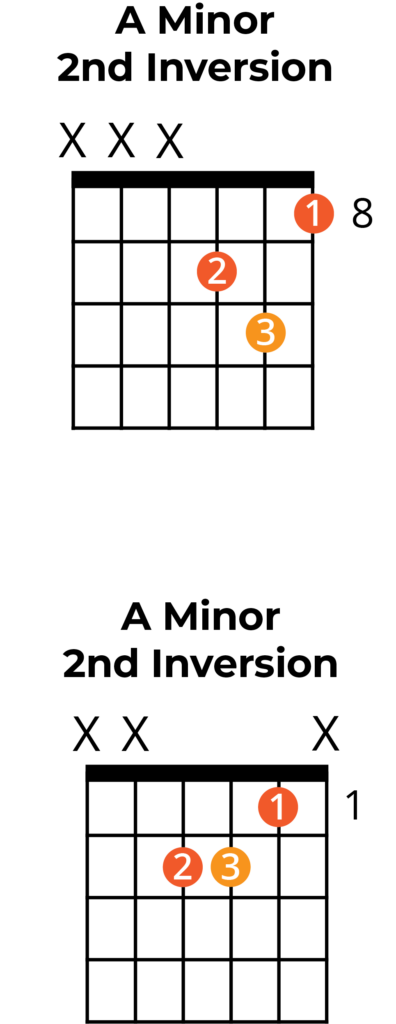
Triads from the A Minor Scale
By looking at the A Minor scale we can actually make triads built on each note and only using notes from A minor. Below you can see a list of each triad we will create be starting on different notes of the scale.
- A Minor
- B Dim
- C Major
- D Minor
- E Minor
- F Major
- G Major

Famous Songs in A Minor
Here’s 3 famous examples of songs in the key of A minor. For this reason, they use A Minor triads, as the root note chord, priminently in their chord progressions.
‘Angie’ – The Rolling Stones
The Rolling Stones’ ‘Angie’ is a heartfelt rock ballad renowned for its soulful vocals and melancholic lyrics. It stands out as a poignant and enduring track in the band’s extensive repertoire.
‘Dreams’ – Fleetwood Mac
Fleetwood Mac’s ‘Dreams’ is an iconic rock track celebrated for its blend of emotional lyrics and harmonious vocals.
‘Tennis Court’ – Lorde
Lorde’s ‘Tennis Court’ is an ethereal pop song known for its minimalist production and introspective lyrics, representing the artist’s distinctive style.
What’s next….?
- Learn how to construct the A Major triad
- Swat up on your chord knowledge with our complete guide to chords.
